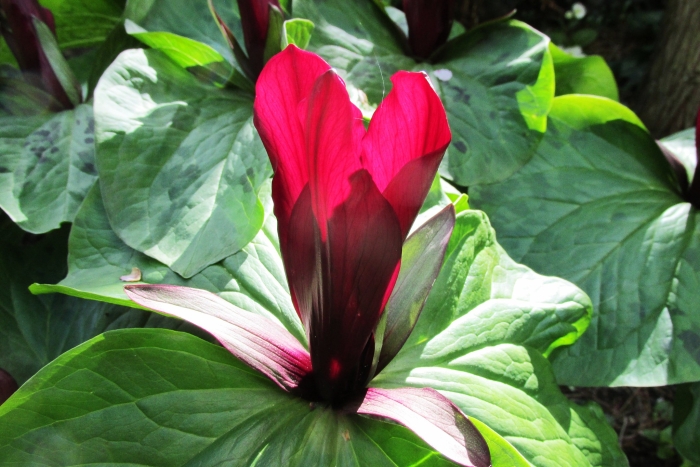Giant Wakerobin
(Trillium chloropetalum)
Giant Wakerobin (Trillium chloropetalum)
/
/

brewbooks
CC BY-SA 2.0
Image By:
brewbooks
Recorded By:
Copyright:
CC BY-SA 2.0
Copyright Notice:
Photo by: brewbooks | License Type: CC BY-SA 2.0 | License URL: http://creativecommons.org/licenses/by-sa/3.0/ | Uploader: Josve05a | Publisher: Wikimedia Commons |





















































Estimated Native Range
Summary
Trillium chloropetalum, commonly known as Giant Wakerobin, is a deciduous perennial herb that is native to the rich, moist woodlands and forests of California, particularly in the Coast Ranges and the Sierra Nevada foothills. It typically grows to a height of 1 foot and a width of 1-2 feet. The plant features a single, showy flower with three large petals that can range in color from deep maroon to a rare greenish-white, blooming in early spring. The foliage is also attractive, with mottled leaves that add interest even when the plant is not in flower.
Giant Wakerobin is valued for its striking spring flowers and its ability to thrive in shaded garden areas where other plants may struggle. It is often used in woodland gardens, shade gardens, and native plant landscapes. While it prefers consistently moist soil, it is relatively low-maintenance once established. It is important to note that this plant can take several years to flower when grown from seed, and it does not tolerate transplanting well. The variety Trillium chloropetalum var. giganteum is particularly noted for its deep maroon petals and has received recognition for its horticultural merit.CC BY-SA 4.0
Giant Wakerobin is valued for its striking spring flowers and its ability to thrive in shaded garden areas where other plants may struggle. It is often used in woodland gardens, shade gardens, and native plant landscapes. While it prefers consistently moist soil, it is relatively low-maintenance once established. It is important to note that this plant can take several years to flower when grown from seed, and it does not tolerate transplanting well. The variety Trillium chloropetalum var. giganteum is particularly noted for its deep maroon petals and has received recognition for its horticultural merit.CC BY-SA 4.0
Plant Description
- Plant Type: Herb
- Height: 1-2 feet
- Width: 1-2 feet
- Growth Rate: Slow
- Flower Color: Purple
- Flowering Season: Spring
- Leaf Retention: Deciduous
Growth Requirements
- Sun: Part Shade, Full Shade
- Water: Medium
- Drainage: Medium
Common Uses
Bee Garden, Deer Resistant, Fragrant, Low Maintenance
Natural Habitat
Rich, moist woodlands and forests of California, particularly in the Coast Ranges and the Sierra Nevada foothills
Other Names
Common Names: Giant Trillium, Common Trillium, Jättetreblad
Scientific Names: , Trillium chloropetalum, Trillium sessile var. chloropetalum, Trillium giganteum var. chloropetalum,
GBIF Accepted Name: Trillium chloropetalum (Torr.) Howell